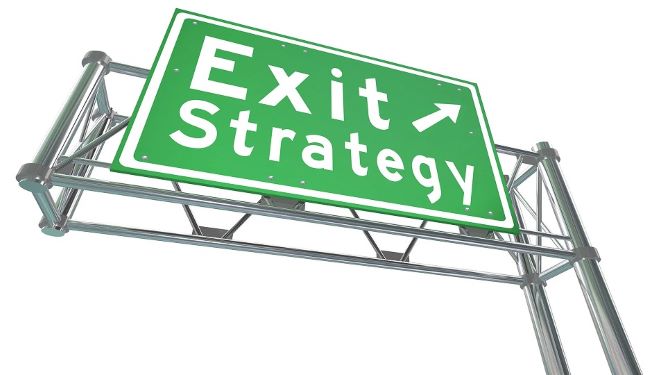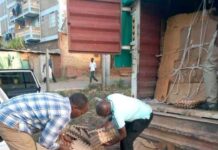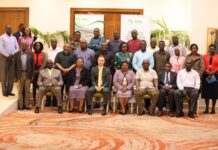By: Dr. Nimrod Israely – Founder and CEO – Biofeed Ltd
All countries in the world will emerge from the COVID-19 crisis in a precarious economic situation as they enter.
But for countries based on the agrarian economy (over 50% living of farming), that typically are not the strongest countries, the situation will be much more critical and not easy to recover.
Agrarian based economies will face what all countries are facing, but as they started from a lower point they will feel it in a much more extreme and severe way.
That may include all or part of the following – the ‘evaporation’ of $ billions as a result of the economic shutdown and fighting the disease cost, high unemployment rate, growing poverty, hunger (?), a stalled industry and production, an economy in crisis, inability to execute national programs or irrelevant of ‘in-progress projects’, fear, instability, uncertainty, etc.
With none, or low monetary reserve, emerging countries will find it much harder to “get back to normal”, and their growth will be slower than planned before the crisis broke.
Such a situation could end up as an economic and human catastrophe if untreated on time and in a proper manner – suitable for the specific situation and specific country’s goals and abilities.
Is there a way to avoid the upcoming catastrophe?
What options does the country have in its attempt to prevent the coming (tsunami) crisis?
To answer those questions, let’s look at two options, where in the first the government is playing a Passive part, and in the other an Active part.
PASSIVE: ‘DO NOTHING’ STRATEGY
The essence of this strategy is –”the problem of COVID-19 is soon behind us; now we can return to “normal”. We hope that nothing has changed. Good luck to you all“.
In other words, everyone (person or business) will face alone or with his friends the post-COVID-19 economic challenges.
Expected results:
Poverty will increase among millions (prediction of up to 500 million around the world), bankruptcies, widespread business closure, inflation will increase, prices will go up, the economy will slow down and make it a risky environment for foreign and local investors, there will be very a small flow of foreign currency coming in.
This strategy is easy to apply, as it requires very little activity by the government.
The economic cost of such a strategy is immense, even if it doesn’t look so at first glance.
The nation’s economy will lose decades, unable to support the poor and hungry people. As a result, they will probably face an increased rate of death.
The above is a shortlist of the terrible outcome of such a passive (do nothing) strategy of dealing with a gigantic economic crisis following the COVID-19 crisis and damages.
ACTIVE: OFFENSIVE STRATEGY
The essence of this strategy is – “we will plan and act to move the economy above and beyond. To stimulate and return it to high levels of activity, faster and to a greater degree than ever before, with new directions and ideas, tools and methods and with a strong emphasis on opening the economic development horizon to export markets, thus strengthening our economy”.
The base of such approach will be; huge governmental investments into National and Private Projects – the outcome will have a lateral economic impact and will be oriented to increase – production, employment, the economic activity, and first and foremost to increase high-value export of products that the international market will happily buy.
What is the main thing that people in Developed Markets are looking for, and ready to buy? Quality and Healthy Fresh Produce (food).
That’s it, for agri-export just focus on those 4 words –
(1) Quality.
(2) Healthy.
(3) Fresh.
(4) Produce (food).
Expected results:
The return to ‘normal’ will be more secure and doable faster. The basis of doing that exists, but it has to be done now, immediately.
We will see economic growth, followed by economic expansion.
The public and investors’ sentiment will be positive, with a strong public desire to move to a better place than it was before the crisis.
The economic benefit of such an offensive strategy will be immense, affecting the economic growth and rate of recovery. It will power the local economy, giving it a top global competitive advantage for the coming years.
In this case, among other activities, the government will direct necessary funds to National Projects that meet its principles and brings high added value.

The basic principles of Offensive Strategy for the Agri- industry should include –
a) Focus on promoting projects that can turn Agriculture into Agri-industry.
b) Projects with the potential of creating fast high added value and economic growth.
c) Projects will result in a fast increase in high value-added products and/or services export.
d) Projects for exporting produce in which the country has a relative advantage.
e) Projects that will help distribute wealth to broad strata of the population (in the agri-industry, and indirectly to other sectors).
f) Projects that will create and support a sustainable change for many people.
g) Projects that will help re-building and converting the emerging economy into a modern one.
A REAL EXAMPLE OF A REAL PROJECT
The Green Valley National Export Project (GVNEP) is an example of a project capable to fulfill the above list of principles.
It illustrates well how, within a relatively short time (of 2-3 years), as a result of a National Project aiming at increasing export, the agri-industry can change from local-oriented to high value export-oriented.
The GVNEP is about building and improving the entire value chain; from Field2Market, and not just a piece of it.
The outcome of the GVNEP is an increased income for the entire value chain (and the country), measured not by tens of percent, but by hundreds!
Following are the general guidelines of the GVNEP model –
1) Fully and Simultaneously. Just like any machine or factory, the Green Valley model will live out to its expectations when simultaneously applied and operational.
2) Export-oriented. Green Valley revolves around export. Export means; foreign currency income, but it also means values, which Green Valley wishes to promote and sees as its core.
3) High added value crops. Green Valley is about increasing the income of farmers, which is best done by the export of high-quality added-value crops to premium high price markets.
4) Vision2Market approach. Green Valley believes it should reflect the vision of the country where it is located and supported the construction of the entire value chain all the way until the market and the extraction of the highest value possible.
5) It’s all about people. Green Valley is a model created by people having extensive knowledge and experience, and the desire to transfer it to as many people as possible.
6) Government Involvement. The government’s role is to create the conditions and the business environment, including regulations and legislation, which will enable the establishment of the Green Valley model, implement it and get it to perform at its best, hence bring the desired economic results.
7) Business-oriented. Green Valley model and structure is fully business-oriented, with the expectation that all participants will do better with it than without it. The goal is to bring prosperity to the country where the venture takes place.
Visit (link) to read more about the Green Valley and other agri-business models.
Note
A prerequisite stage for a successful Green Valley National Export Project is the ability to grow fruits, such as mangoes and avocados, free of chemical residues and quarantine pests, i.e. fruit flies.
Hence, it is critical to note that the first stage in any GVNEP will be the creation of a Fruit Fly Certified Trade Zone (FFCTZ), making sure that the #1 phytosanitary obstacle is removed (for more info – link).
It is business-wise clear that the creation of a value chain for fresh agricultural produce is necessary for the country anyway and regardless of the COVID-19 crisis, just as it is clear that the impact of such value chain will go far beyond the COVID-19 crisis.
The expected result of the GVNEP will be exports, a growing influx of foreign currency, increasing disposable income of broad sectors, attracting foreign investors, increasing investment, and creating a positive and safe business environment.
However, the ultimate goal of the GVNEP is to build the infrastructure of a sustainable value chain.
Once the value chain is in place, it will continue to grow, bringing prosperity to farmers and the country as one. Hence, the rate of export serves as an Indicator of the quality of the value chain.
CRISIS EXIT STRATEGY
We have seen the above two possible strategies for exiting the COVID-19 crisis.
We have seen how the Defensive Strategy does not allow the post-crisis economy to grow, and even deepens the recession and causes it to be perpetuated for decades.
In contrast, the Offensive Strategy is characterized by being proactive lead by strong visionary leadership.
Any Government leading Offensive Strategy undoubtedly will drive fast-forward the wheels of the economy, leading to a rapid return to a fast-growing economy.
This is the unavoidable result of the economic propulsion of the beneficial National Projects, with their long-term, sustainable, positive impact.
Credit: the ideas presented above for the Exit Strategy from the COVID-19 crisis are inspired by the New Deal; a series of successful programs, public work projects, financial reforms, and regulations enacted by President Franklin D. Roosevelt in the United States between 1933 and 1939 (link).
To a large extent, the New Deal is responsible for turning the USA into the Super Power it is today. The same Super Power that 25 years later landed a Man on the Moon, thanks to a vision –
“We choose to go to the Moon…We choose to go to the Moon in this decade and do the other things, not because they are easy, but because they are hard; because that goal will serve to organize and measure the best of our energies and skills, because that challenge is one that we are willing to accept, one we are unwilling to postpone, and one we intend to win, and the others, too.” (John F. Kennedy, 1962)
I know that each country, each economy is different and requires a tailor-made (COVID-19 crisis) Exit Strategy. If you want to harness the agri-industry enormous potential to become an integral part of your Exit Strategy from the COVID-19 crisis, instead of a hindrance, contact me and we will discuss how it can be applied to your unique situation.
- Please share and forward the article to someone who should /need to see it.
You can use the – Press here – link on the top of the article.
And one more thing…
I REALLY VALUE your feedback and thoughts! So don’t squint and please share them with me. A reply to this email with a few words of your own will be greatly appreciated.
For questions or discussions regarding a particular country/situation please contact me at nisraely@biofeed.co.il or text me +972-5423425 (WhatsApp).










[…] Source link […]
[…] Source link […]
Comments are closed.